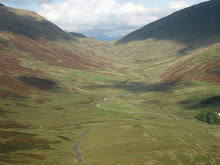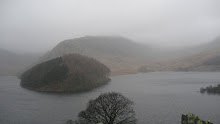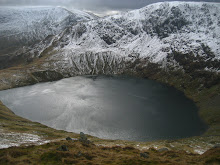
This intriguing monument goes by the name of Winters gibbet and it can be found on a lonely moorland road near Elsdon in Northumberland. It is guaranteed to stop any passers by in their tracks. The story behind it is this. In 1791 William Winter and Jane & Eleanor Clark were executed at the Westgate in Newcastle for the murder of Margaret Crozier. Crozier was an old lady living alone miles from anywhere and an easy target for the traveller Winter and the Clark girls, a pair of tinkers, who accompanied him to rob and murder the old lady. They were soon caught and paid the price for their crime. Following the execution the bodies were disposed of in different ways: the females dispatched to the surgeon's hall for dissection whilst the body of William Winter was hung in chains on the gibbet a few miles south of Elsdon within sight of the scene of his crime.The stone at it's foot is the base of a saxon cross which marked the highest point of this ancient drove road down which cattle were driven from Scotland to the English markets. Winter's body remained on the gibbet as a sight for the passing curious until his clothes rotted. Eventually his body was cut down, the bones scattered, and the skull sent to Mr Darnell of Newcastle. In time the original gibbet decayed, partly due to natural processes and partly due to the quaint country practice of rubbing pieces on the gums to cure toothache. Around 1867 Sir Walter Travelyan of Wallington ordered a replica, complete with wooden body, to be erected on his land. In time the wooden body disappeared following its use for target practice, till only the head remained, giving rise to the 20th century custom of hanging a fibre glass head on the replica gibbet. By the way, they don't hang people in Northumberland anymore.







































No comments:
Post a Comment